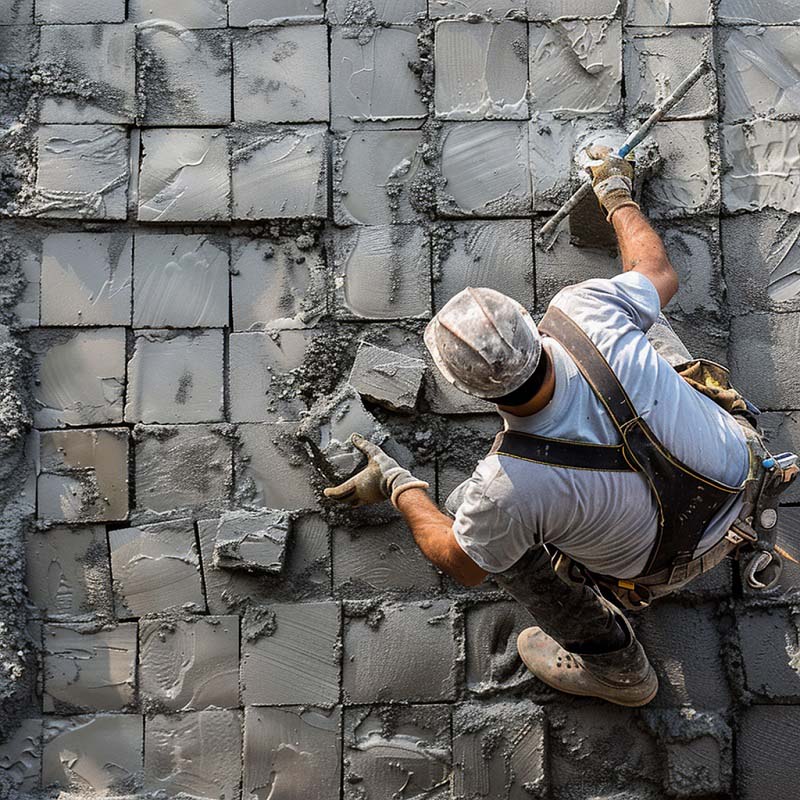It’s a little tricky to maintain a safe deck during those cold, icy winter months. The ice has to go, but wood beams have their limits. Here, we’ll offer a few quick tips to protecting your family and deck this winter season.
Rock Salt? Not so Fast.
Rock salt may sound like the obvious choice, but it could actually do more harm than good. Rock dissolves ice by removing moisture. Unfortunately, it does the same thing to wood planks. Wood that has been dried out doesn’t expand and contract naturally to temperature changes. This can lead to gaps, cracks, and warped planks.
Rock salt is also corrosive. More corrosive rock salt typically does a better job of removing ice quickly, but it’s also more damaging. Unfortunately, wood is highly susceptible to corrosion.
However, this doesn’t mean that rock salt is always a bad choice. Certain treatments can make decks more resistant to corrosion. Trex Decking and other composite decks are specially designed to withstand repeated uses of rock salt treatments. Just remember to rinse it off when you can safely do so (i.e. when it won’t refreeze). There are also rock salt products that are specifically designed for wood decks.
So, ultimately, the issue of using rock salt to deice your wood decks is one of due diligence. Remember to check the documentation for your deck and the label of any deicing product you purchase.
Non-Slip Rubber Mats
Ring rubber mats are specifically designed to prevent slips. Even better, they naturally grip hard surfaces – no mounting necessary! This neat feature also makes them easier to clean: just lift and sweep.
However, you’ll also need to keep a close eye on them. Rubber ring mats can trap water, which can prove to be problematic over time. Remember to remove them when temperatures become consistently warmer. Also, check them periodically to see if water is pooling between the rings.
Anti-Slip Decking Coat
This is one of the best solutions we’ve found for reducing deck ice during the winter. An anti-slip decking coat will help prevent ice before it forms. As an added bonus, it will also help protect your deck’s aesthetics from the sun’s harmful rays during summer.
However, it does take a little prep work. You’ll need to carefully clean your deck prior to application. This means a thorough, detailed sweep followed by a complete pressure washing.
It also takes some elbow grease to apply. You’ll need to essentially “paint” it on your deck carefully, ensuring that it reaches down into the low points. It’ll take time, and you’ll need to do it in one session so that it doesn’t get dirty again.
You’ll also need to check the documentation for additional details, including how long it needs to dry, whether multiple coats are necessary, and how long the protection should last. You may also need to stir it more than once during application to ensure the proper consistency.
Obviously, you’ll need to do this before freezing temperatures set in.
DIY Deck Deicing Solution
Here’s a quick, easy way to remove ice from your deck using a mixture of items that you probably already own.
The ingredients:
- Rubbing alcohol (1 tablespoon)
- Dish soap (1 teaspoon)
- Hot water (1 gallon)
Simply pour the mixture to remove ice.
The DIY solution might be easy, but it’s not always the most economical. It may also not work for thick layers of ice.
Never Use Metal Shovels
We recommend never using a metal shovel to remove ice from your deck, even if it’s Trex or composite. Metal shovels will damage your deck fairly quickly and will likely void any warranty protections.
However, you can still use a wood or plastic shovel. They’re easier on your deck’s wooden planks and still remove snow effectively. They also won’t rust after repeated use.




